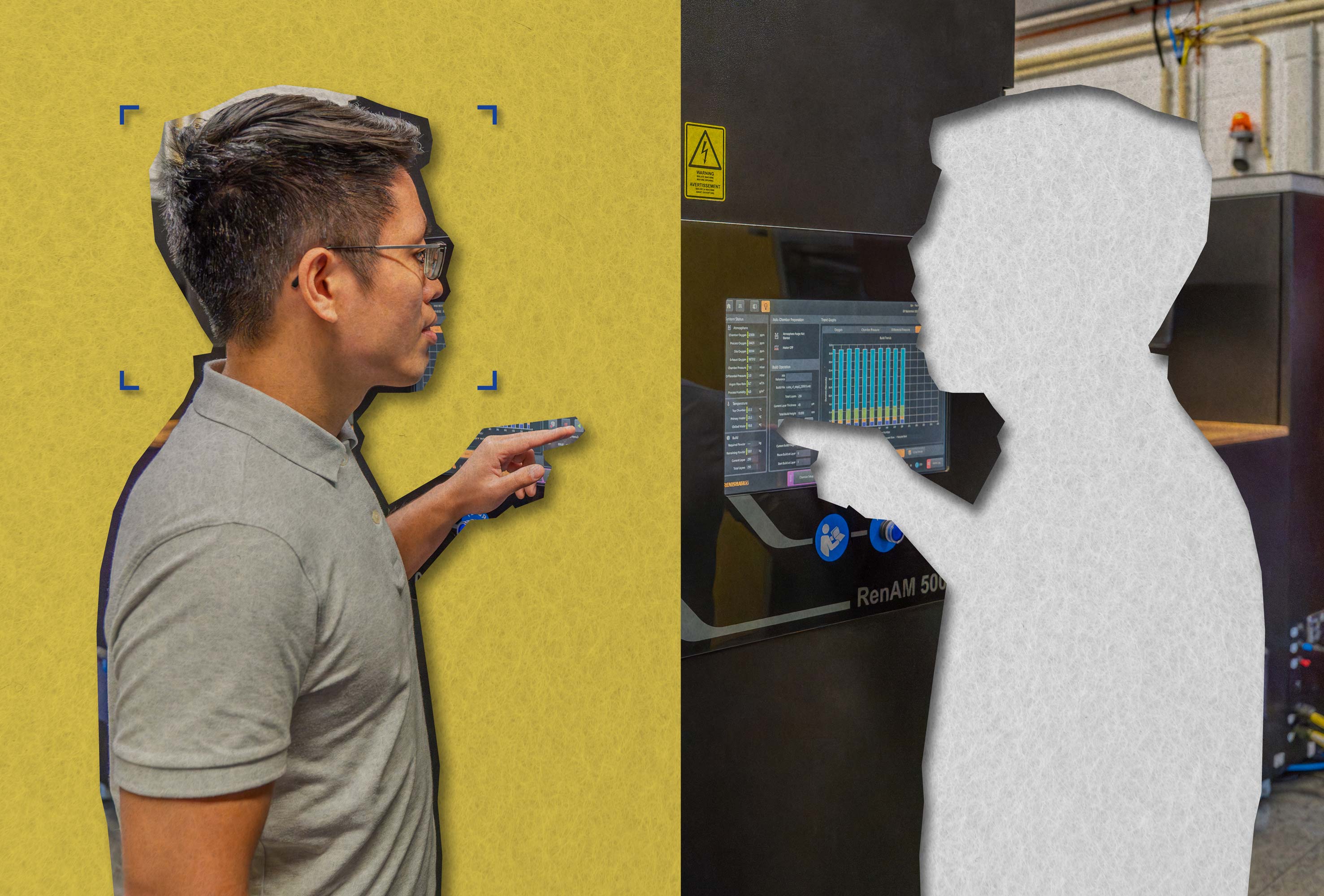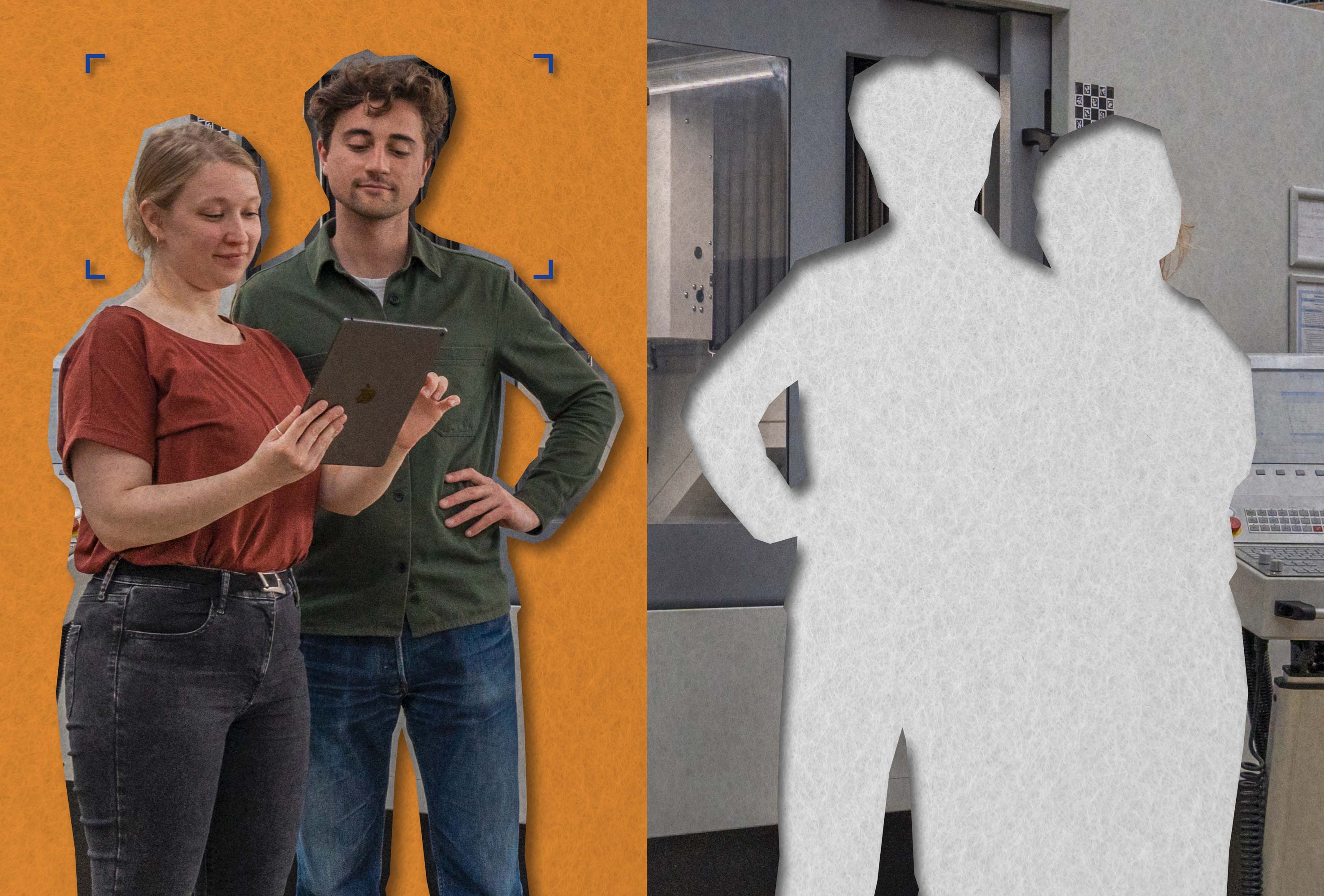Assistance on the shop floor
At the level of manufacturing processes, we can primarily distinguish between direct and indirect assistance. Indirect assistance operates in the background, while direct assistance involves direct human-machine interaction. Direct assistance therefore primarily supports workers on the shop floor directly in performing their tasks. This can for example include the mentioned web-based app with practical guidance, which is equally suitable for numerous applications beyond onboarding. It can also be used for maintenance, repair and overhaul or setting up machine tools, for instance.
Virtual and augmented reality technologies can be helpful tools, providing an interface between humans and machines in direct assistance. In combination with digital twins, for example, they enable the simple manipulation of data and models, which can then in turn be transferred to a real object. In order to function properly in an industrial business context, these technologies require a high degree of data consistency. Up until now, changes to a production step have generally been made manually. For a new variant, for example, a modified process description is sent to the worker, or a modified program is loaded into the machine control system. This can result in inconsistent situations, for example due to retroactive adjustments. An interdisciplinary team at Fraunhofer IPK is striving for consistency from product development to live instruction and machine control in order to ensure that all involved stakeholders are updated at the touch of a button. An ambitious research project with numerous partners aims to make digitally integrated assistance possible this way. Digitalization and data consistency along the process chain are being tested here, exemplified by an intelligent, human-centered assistance system that uses AR and VR methods to support fastening applications in automotive production.
Another example of very direct assistance is the use of physically supportive soft robotics solutions, which are also being researched at Fraunhofer IPK. As such, the exoskeleton PowerGrasp has been developed further to not only provide strength support, but also recognize movement intentions and even states of fatigue.
Indirect forms of assistance, on the other hand, are essentially decision-making aids based on data analysis. These are used, for example, in quality assurance, where sensor-supported technologies relieve employees of monotonous and strenuous tasks. Evaluation of sensor data can also provide them with a reliable data basis for difficult decision-making situations. For instance, scientists at Fraunhofer IPK can enable their partners to carry out in-situ monitoring of additive processes. They are also finding innovative solutions for working with challenging materials and processes. One such application is a combined welding process for working with aluminum in the production of housings for electric motors and batteries. In this complex process, the aim is to prevent the formation of pores or adhesion defects. Research scientists at Fraunhofer IPK have thus invented a type of intelligent co-pilot that uses AI and sensor technology to warn of potential errors in the production process.
 Fraunhofer Institute for Production Systems and Design Technology
Fraunhofer Institute for Production Systems and Design Technology





